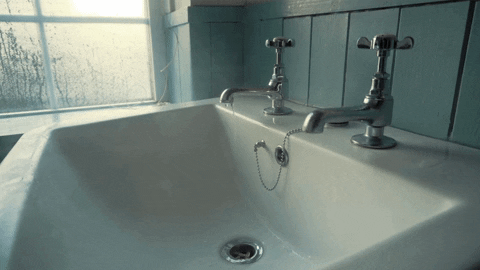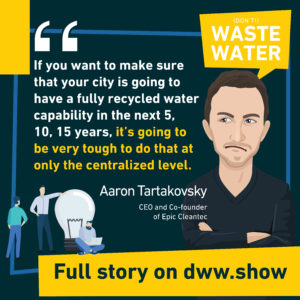To provide water to everybody, the first thing you need is… water! The bad news is that, with an increasing population and changing climatic conditions, this is less and less of a given. This is where technology has humanity’s back: we can now reuse water and wastewater in much shorter loops than we used to. (Thank you Water Industry 😉)
Let’s review the state of the art, the challenges & opportunities, and the current state of the rollout of reuse, reclamation, and recovery best practices!
Table of contents
What is Water Reuse?
Water Reuse is the act of giving Water multiple lives. It is, by definition, a euphemism: one way or the other, water gets used more than once! (we’ll come back to that 😉)
Water Reuse and Resource Recovery are at the same time an incredible opportunity and almost a necessity in many places around the Globe. And before we let anyone object that wastewater is disgusting and shall be flushed away, let’s get things straight:
Waste does not exist in nature. There is nothing called “waste” in nature! Everything is a valuable building block, a natural resource.
Denise Mall – Managing Director of EnsO Earth
The first of these natural resources is probably simply the Water inside wastewater. It sounds quite straightforward, yet:
We recycle and reuse such a small percentage of our Water. Yet every headline every three days in August, September, and October is of the lack of Water on the west coast of the United States!
Alexander Loucopoulos – Partner at Sciens Water
The World will miss 40% of the Water needed to strive in 2030
We still see this paradox in many places. On the one hand, we desperately miss Water, with water scarcity on the rise. By 2025, two-thirds of the world’s population may face water shortages.
And on the other hand, we keep flushing wastewater away as if it was a single-use resource when indeed, every single water droplet we drink; went through a dinosaur at some point.

Let’s be clear, the reason why we behave that way has nothing to do with our technical capability to reuse or recycle Water, as Jacob Bossaer realized when working in Antarctica:
I was thinking if you can recycle Water, because that’s what I did, I recycled Water in one of the most extreme environments in the world, you can do it anywhere.
Jacob Bossaer – CEO & Founder of BOSAQ
Water Reuse might then also be too wide of a concept to stand alone. That’s why we have to split it down further.
The Three Types of Water Reuse
Let’s start with the one, people have in mind (and is often wrong)
1. Direct Potable Reuse
As the name states, you treat your wastewater up to drinking standards and put it back in the loop. That’s what’s sometimes called toilet to tap – which is a horrible marketing concept if you ask me.

Outside of extreme environments like the International Space Station or Antarctica, that’s almost never used.
Then, you have:
2. Indirect Potable Reuse
You also treat your Water up to high standards, but instead of feeding it directly back in the loop, you use it for Groundwater recharge or mix it up in raw water reservoirs as they do with NeWater in Singapore (we’ll also come back to that 😉.)
This approach is the one you see, beyond Singapore, in California, Florida, Texas, and more and more of the water-scarce regions of this world.

Finally, you have:
3. Non-Potable Reuse (often called Water Reclamation)
Those are all the grey uses of Water and can cover many use cases:
We’re not looking at water “fit for purpose.” Why do we need potable Water to flush a toilet?
We basically get a hundred percent of our Water from the municipality or the city, and we pay for that. The reality is that only 30% to 40% is true potable demand, that is really used for drinking and ablutions!
Denise Mall – Managing Director of EnsO Earth
This water reclamation is what you’ll encounter when you use that water to flush your toilets, irrigate your crops, wash your car and broadly speaking, use it in industry or agriculture.
Where shall we close the Water Reuse Loop?
To give you a sense of magnitude, this shall cover 9% of our water needs if we want to provide Water for All by 2030 – which is about five times more than the total amount of Water we expect to draw from desalination.
Today, it is probably the lowest hanging fruit when it comes to where we want to feed reused Water in the water cycle. Which leads to a follow-up question: what is the best scale and place to close that loop?
1. Onsite Water Reuse in Cities
San Francisco became the first city in the country to actually legislate that all new large buildings have to do onsite water reuse. That was 6 years ago! There are now many more cities and many more states adopting onsite reuse as part of their long-term planning.
Aaron Tartakovsky – CEO & Co-Founder of EPIC CLEANTEC
In the use case, Aaron Tartakovksy just cited, you’re closing the loop in a building’s basement. That way, you can cover up to 95% of the water needs in cities and reshape the balance between central and distributed infrastructures.

2. Water Reclamation in Agriculture
On the bigger scene, the usual suspect when it comes to where to reclaim Water is logically the biggest user.
The most important part of the Water Industry by the quantity of Water is irrigation or agriculture. Agriculture is the biggest user of Water by far globally. I think about 70% of the global water use is going for irrigation.
Ravid Levy
In countries like Israel, over 80% of wastewater is reclaimed for agricultural uses, as Ari Goldfarb explains:
If you eat a watermelon in Israel, you are actually eating waste water. that’s been reused
Ari Goldfarb – CEO & Founder of KANDO
… and Ways to Improve it!
Given the size and impact of Agriculture in the Water Cycle, that’s also an opportunity to rethink how Water is used there.
The amount of Water that gets used in agriculture is so massive, even small amounts of saving can be very significant. And if you think about it, moving from flood based irrigation to drip irrigation, changing the way that pesticides are administered… There are ways that we can do things differently and smarter. We can do regenerative agriculture and help to store more Water in the soil. We can cover our crops. And we can use hydroponics, we can do so many different innovative solutions at large-scale, corporate scale, and also at small scale.
Mina Guli – CEO & Founder of THIRST
Now, agricultural reuse might still not be the best fit for every country, as it involves some pre-requisites like a certain level of wastewater treatment – you won’t just Water your crops with untreated sewage outputs.
And if you keep in mind that 80% of the world’s wastewater is still not correctly managed as we speak, there’s a way to go here.
3. Industrial Water Reuse
But moving on, there’s a last water user we haven’t covered.
I understand that in some countries reusing for agriculture, doesn’t make much sense, but reusing it for industry, for example, makes a lot of sense, rather than using your limited freshwater resources to feed that same industry.
Ravid Levy
The industry is using about 20% of our water resources today. To them, Water is just another part of their bottom line, and not the most exciting or interesting if you ask them, as Manaf Farhan confirms:
In the past industries have looked at wastewater as a tax or as a liability. They look at it as something that they have to pay money for, to produce, to be in business where you can actually now convert that liability into an asset. And that’s part of the reason why we look at industrial wastewater because it has high concentrations of BOD.
It’s effectively sugar water, or it has milk waste, and other byproducts in it that are organic based it’s food waste that we’re going to convert into energy.
Manaf Farhan – CEO & Co-Founder of EMG International
Towards positive industrial wastewater streams
In industry, water reuse can actually be transformative. Because if you recall that wastewater contains 7 to 10 times the energy needed to treat it, it opens an opportunity for energy-positive wastewater treatment processes.
So beyond the pure opportunity to reuse the Water retained in wastewater, there’s now also a chance to leverage what it contains in short feed-loops inside an industrial site. Ravid Levy says nothing else:
We keep on saying “water-energy nexus.” I don’t think we’ve realized enough how closely those things are related!
Ravid Levy
Wastewater reuse is hence an opportunity to feed more Water into the small water cycle; a potential energy source as a bioresource factory, and even more:
We turn wastewater into three outputs. One is recycled Water. Two is organic soil amendments. The third piece is recovered wastewater heat. By our calculations, there’s enough energy being lost through wastewater heat to power every single electric vehicle on the road in the United States right now.
Aaron Tartakovsky – CEO & Co-Founder of EPIC CLEANTEC
4. Turn Wastewater into Fertilizers
As we grapple with growing water scarcity and wastewater pollution, one innovative solution is turning heads and greening fields: transforming wastewater into fertilizers. This approach not only addresses two major environmental challenges but also paves the way for more sustainable agricultural practices.
The idea behind this is simple yet profound. Wastewater, often considered a problem, is rich in nutrients like nitrogen, phosphorus, and potassium – essential elements for plant growth. Through a meticulous treatment process, this nutrient-rich wastewater can be converted into valuable fertilizers.
Here’s how it works: Wastewater undergoes a series of filtration and purification stages to eliminate harmful pathogens and contaminants. The remaining nutrient-rich water, or ‘effluent,’ is then further processed, often through methods like anaerobic digestion or composting, to create a safe, usable fertilizer (like Vuna’s Aurin).
There are many benefits to this approach. For starters, it reduces our dependency on chemical fertilizers, which can be harmful to the environment and deplete soil health over time. Instead, the use of wastewater-derived fertilizers can lead to increased crop yields and improved soil quality, thanks to their organic matter content.
But the potential of wastewater fertilizers extends beyond large-scale agriculture. Home gardeners can reap the benefits too! Switching to eco-friendly alternatives like wastewater fertilizers not only promotes the growth of your plants but also supports sustainable living. It’s a win-win situation for both you and the environment.
What goes down the drain doesn’t have to be waste. With the right processes, it could nourish gardens and fields and contribute to a greener, more sustainable future.
What’s still in the Way of Water Reuse?
In conclusion, the technical requirements to enable all of this are fulfilled in most use cases today and swiftly progressing when it comes to advanced resource streams like phosphor recovery or hydrogen production.
The market driver is also very clear, with humanity theoretically missing 40% of the water it needs to thrive in 2030.
The two last obstacles that are still in the way are first the overall perception of Water and especially wastewater
And second, the economic balance of wastewater reuse. As long as the bad behavior keeps being incentivized, in the sense that you can abstract ground or surface water resources for a fraction of the wastewater reuse cost, even if that’s highly unsustainable, that will represent a hinder to the development of virtuous reuse loops.

